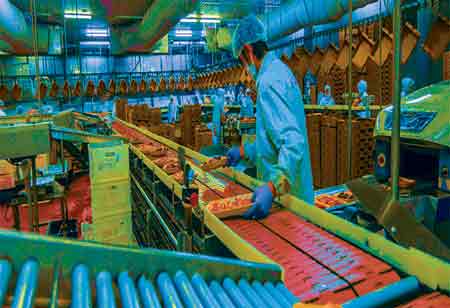THANK YOU FOR SUBSCRIBING
Be first to read the latest tech news, Industry Leader's Insights, and CIO interviews of medium and large enterprises exclusively from Food and Beverage Tech Review
Strategy for Water Conservation and Reuse in Poultry Processing
Wastewater treatment has emerged as a critical issue in the poultry industry, considering environmental concerns and water scarcity in some areas.

By
Food and Beverages Tech Review | Friday, November 25, 2022
Stay ahead of the industry with exclusive feature stories on the top companies, expert insights and the latest news delivered straight to your inbox. Subscribe today.
Water reuse is essential for a sustainable future. Large amounts of water are required for cleaning and removing solubles. Water recycling becomes a critical concern for these plants.
FREMONT, CA: Wastewater treatment has emerged as a critical issue in the poultry industry, considering environmental concerns and water scarcity in some areas. Wastewater treatment contributes to a reduction in the water footprint of poultry production.
The meat and poultry processors require a lot of water to remove soluble particles and dirt. A plant of normal size can develop with 1000,000 to 2000,000 gallons of water daily, loaded with proteins and fats from meat, skin and feathers, blood, and a mixture of grit and other organic matter. Here are some ways to avoid water scarcity in poultry processing.
Water reuse: Meat and poultry facilities have realized the need for a water recycling process and recycled process water to balance rising water prices, reduce wastewater treatment expenses, cut cost municipal wastewater discharge fees, and promote corporate sustainability objectives.
Technology and chemistry have made to integrate water reuse into any meat and poultry processing business feasibly and cost-effectively.
Upstream liquid: New technologies in the poultry and meat processing sector not only enhance the quantity of water that can be reused by lowering the amounts of BOD, TSS, and TKN in plant water streams.
Inefficiencies in upstream liquid/solids separation screens: Separation is the process of directing particulates in a flowing stream to one point while directing fluids to another. Solids are often collected in a fixed spot, whereas fluids move continually. The solids should be segregated and be inorganic, insoluble, distinct particles with a greater density than the continuous fluids.
While maintaining high uptime operability, a liquid/solids separation system must be constructed to be a heavy-duty, robust, user-friendly, tool- and mechanic-friendly, run with low maintenance, and have an effective clean-in-place (CIP) system.
Sanitary zero-maintenance screen: This method reduces labor costs and optimizes sanitary operation. For example, Lyco Manufacturing provides industrial cooking and cooling equipment and liquid-solid separation screens for the food and beverage industries.
I agree We use cookies on this website to enhance your user experience. By clicking any link on this page you are giving your consent for us to set cookies. More info







